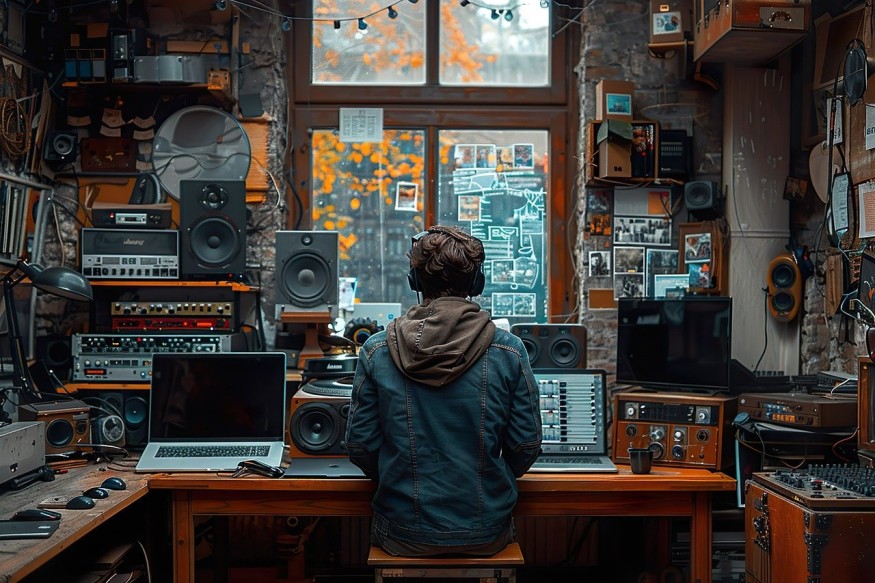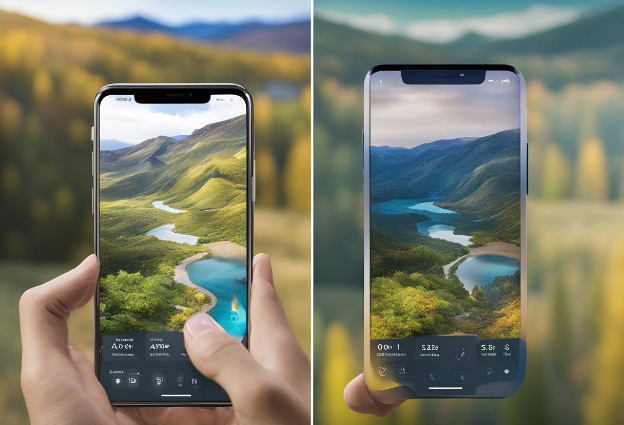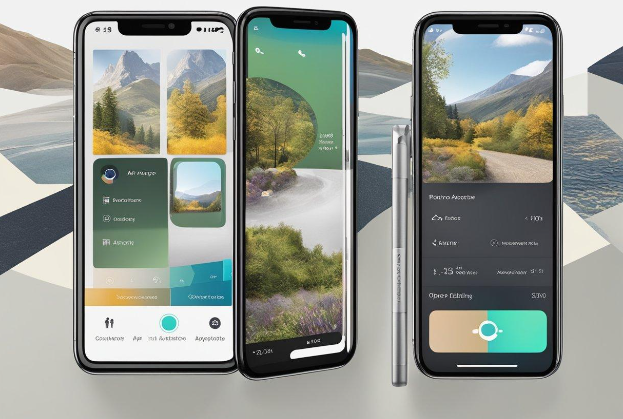
The Advent of AI in Photo Editing
In recent years, artificial intelligence has dramatically altered the landscape of photo editing. By integrating AI into photo editing apps, we've seen a transformation in how amateur photographers can enhance their images with professional-quality effects.
Defining AI-Powered Photography Tools
AI-powered photography tools utilize machine learning algorithms to automate and enhance various aspects of photo editing. These tools can automatically adjust exposure, contrast, and color balance, tasks that traditionally required meticulous manual tweaking.
Some advanced tools even offer features like sky replacement and intelligent retouching, allowing us to improve our photos effortlessly. By processing vast amounts of data, AI enables these applications to deliver precise adjustments that cater to the user's preferences.
Evolution of Photo Editing Software
Photo editing software has undergone significant evolution, particularly in the last decade. Initially, these tools relied heavily on user input and manual adjustments.
With the advent of AI, we've witnessed a shift from manual to automatic processes. Early examples included basic auto-correct features, but today's software can execute complex edits. Recent innovations, such as Luminar's sky-swapping tool, highlight the sophistication of current AI capabilities.
Impact on Amateur Photography
AI has democratized photo editing, making professional-level enhancements accessible to a broader audience. For amateur photographers, this means less time spent on intricate editing and more time capturing moments.
AI tools in apps simplify the editing process, providing intuitive interfaces that even beginners can navigate with ease. These functionalities bridge the gap between amateur and professional photography, enabling everyone to create visually stunning images with just a few clicks.
Understanding AI Features in Editing Apps
AI-powered photo editing apps have introduced revolutionary features that simplify complex tasks and enhance photo quality with minimal manual intervention. These advancements make it easier for amateur photographers to achieve professional-level results in their photos.
Automatic Object Removal
Automatic object removal is a game-changer in AI photo editing. With a few clicks, unwanted elements can be seamlessly removed from images. This feature identifies objects and fills in the gaps intelligently, making it appear as if the objects were never there.
Adobe Photoshop and Luminar Neo are leading the way, offering refined tools that produce natural results whether it's removing tourists from a landscape or erasing blemishes from a portrait, the precision and ease save users significant editing time.
Intelligent Color Correction
Intelligent color correction uses AI to analyze the colors in an image and make adjustments that enhance its visual appeal. This feature considers various factors such as lighting, saturation, and color balance to produce a more vibrant and balanced photo.
In Canva and Pixlr, color correction tools are designed to be intuitive. The AI learns from user edits, improving its suggestions over time. This personalized touch ensures that the user's stylistic preferences are considered, leading to consistently pleasing results.
AI-Generated Backgrounds
AI-generated backgrounds allow users to replace the backdrop of an image with minimal effort. This technology utilizes deep learning to understand and separate the subject from the background, enabling seamless integration of a new setting.
Photoleap app and Luminar Neo provide robust capabilities in this area. Users can transform a simple portrait into a professional headshot or place a subject in an entirely different environment. It's particularly useful for enhancing social media posts or marketing materials without the need for green screens or complex setups.
Advanced Cropping and Resizing
Advanced cropping and resizing features in AI-powered photo editors trim and adjust images and optimize composition. These tools suggest the best crop based on the rule of thirds, leading lines, or other compositional techniques.
ON1 and Adobe Photoshop offer tools that analyze images to recommend optimal crops, ensuring better framing and focus. AI-driven resizing ensures that the photo's quality and resolution are maintained, preventing loss of detail. This particularly benefits different output formats, from large prints to social media thumbnails.
Comparative Advantages of AI Over Manual Editing

AI-powered photo editing offers notable benefits over manual editing in terms of speed, precision, and accessibility. These features highlight significant improvements, making photo enhancement more efficient and approachable for everyone.
Speed and Efficiency
AI algorithms significantly reduce the time required for photo editing. Tasks that previously took hours can now be completed in minutes. We no longer need to perform repetitive actions manually. Instead, AI can batch-process images, applying consistent edits across hundreds of photos in seconds.
Additionally, AI streamlines complex edits. Automatic adjustments like color correction, object removal, and background blurring happen instantly. This efficiency level allows us to focus on creative aspects, enhancing productivity without compromising quality.
Precision and Quality
AI tools offer high levels of precision in photo editing. For instance, AI can identify and enhance minute details that might be overlooked in manual edits. Advanced algorithms ensure accurate color balancing, sharpening, and noise reduction, resulting in higher-quality images.
Moreover, AI employs machine learning to learn from previous edits. This continuous improvement enhances the accuracy of the editing process over time, adapting to our specific style and preferences.
Accessibility for Non-Professionals
AI-driven photo editing democratizes access to high-quality editing tools. Non-professionals without advanced technical skills can achieve professional-grade edits. User-friendly interfaces and automated features make complex editing tasks simple.
For example, smartphone apps now incorporate AI to enhance photos with one click. Features like automatic cropping, lighting adjustments, and filter applications are accessible to everyone. This ease of use allows us to produce stunning images effortlessly, breaking down barriers that previously limited photo editing to a professional niche.
Ethical Considerations and User Privacy

AI-powered photo editing apps in 2024 bring both excitement and challenges, particularly in terms of ethical considerations and user privacy. The use of AI introduces concerns about data security, ethical practices, and intellectual property rights, which demand our attention to maintain trust and transparency.
Data Security in Editing Apps
User privacy stands at the forefront of data security concerns in photo editing apps. These applications often require access to user photos, which can include sensitive personal information. Therefore, robust encryption and data protection protocols are essential.
Developers must implement end-to-end encryption to ensure that user data remains private and secure from unauthorized access. Regular software updates and security audits can help identify and patch vulnerabilities. We must also be transparent about data storage practices and inform users if any data is shared with third parties.
Ethical Use of AI in Photography
The ethical use of AI in photography revolves around maintaining the integrity and authenticity of images. It's crucial that AI tools do not mislead viewers by creating unrealistic or deceptive visuals. For instance, editing tools should clearly indicate when an image has been significantly altered.
We should promote responsible use of these technologies by adhering to industry guidelines that emphasize transparency and disclosure. Establishing a clear code of ethics for AI-driven photo editing can help professionals maintain trust and credibility in their work, ensuring that enhanced photos don't compromise ethical standards.
Consent and Intellectual Property
Respecting user consent and intellectual property rights is paramount in AI-powered photo editing. Users must have full control over how their images are processed and used. This involves obtaining explicit consent before using photos for any purpose beyond personal editing.
We need to implement features that allow users to set permissions and preferences for their images. Additionally, our apps should acknowledge and respect copyright laws to avoid unauthorized use of someone else's work. By balancing these factors, we can foster an environment of trust and respect in the digital photography space.
The Future of AI in Consumer-Level Photography

Our exploration reveals rapidly advancing technologies in AI-powered photography, promising significant enhancements in user experience and redefining how we capture and edit photos. These advancements are poised to bring professional-grade features to everyday users.
Emerging Technologies and Trends
AI-driven tools are dramatically changing consumer-level photography. Generative AI, for instance, lets users create images from text prompts, transforming the creative process. This technology is becoming mainstream, with companies like Adobe integrating it into their software.
Another significant trend is advanced automation. AI can now handle tasks such as object removal and skin retouching, which were once the domain of skilled professionals. This automation makes sophisticated editing accessible to amateurs and reduces the time required for complex edits.
Personalization is also becoming key. AI can learn individual user preferences over time, tailoring recommendations and automated edits to match personal styles. The continuous improvement of AI algorithms ensures that these tools will become increasingly sophisticated and intuitive.
Predicting User Experience Enhancements
The future user experience in AI-driven photography will be characterized by ease of use and efficiency. AI tools simplify the editing process, making it possible for users with no technical background to achieve high-quality results quickly. This democratization of technology empowers more people to explore creative photography.
Moreover, AI enhances convenience. Real-time feedback and suggestions help users make informed decisions while editing. Features like automatic scene detection and adjustment of lighting conditions are becoming standard, ensuring optimal photo quality without manual intervention.
We can also expect seamless integration across devices and platforms. As AI continues to evolve, these tools will function more cohesively with other apps and services, creating a unified and streamlined photography ecosystem.
In summary, as AI technology progresses, consumer-level photography will experience major improvements in accessibility, efficiency, and personalization, making advanced photo editing capabilities available to all.
Frequently Asked Questions
Our exploration of AI-powered photo editing delves into the numerous features introduced in 2024, its impact on amateur photographers, and the user experience. We also examine its cost benefits and limitations.
What new features do AI-powered photo editing apps offer in 2024?
In 2024, AI photo editing apps have introduced revolutionary features such as Lens Blur, allowing users to blur backgrounds and foregrounds accurately. Adobe Photoshop and Lightroom now integrate advanced AI tools to enhance and transform images effortlessly.
How has AI technology improved amateur photography?
AI technology has democratized photo editing by making sophisticated tools accessible to amateurs. These AI-powered apps automate complex tasks like skin retouching, object removal, and color correction, enabling amateurs to produce professional-quality images with minimal effort.
Can AI photo editing apps enhance images taken with low-end cameras?
Yes, AI photo editing apps can significantly enhance photos from low-end cameras. These apps use machine learning algorithms to improve image quality, adjust lighting, and sharpen details, making photos with less equipment look more polished and professional.
What are the limitations of using AI for photo edits?
While AI photo editing apps offer powerful tools, they have limitations. AI can sometimes misinterpret an image's context, leading to over-edited or unnatural results. Additionally, users may encounter restricted manual control over specific edits, making fine-tuning challenging.
How user-friendly are the AI photo editing apps for beginners?
Most AI photo editing apps are designed with user-friendliness in mind. Apps like Canva and Pixlr offer intuitive interfaces and easy-to-use tools that require little to no prior photo editing experience. Tutorials and AI-driven recommendations further simplify the editing process for beginners.
What are the cost benefits of using AI photo editing software?
AI photo editing software often offers various pricing models, including affordable subscriptions. Some offer free versions with limited features, making them accessible to those on a budget. Additionally, automating complex edits can save users time and money that would otherwise be spent on professional services.
© 2025 ScienceTimes.com All rights reserved. Do not reproduce without permission. The window to the world of Science Times.












